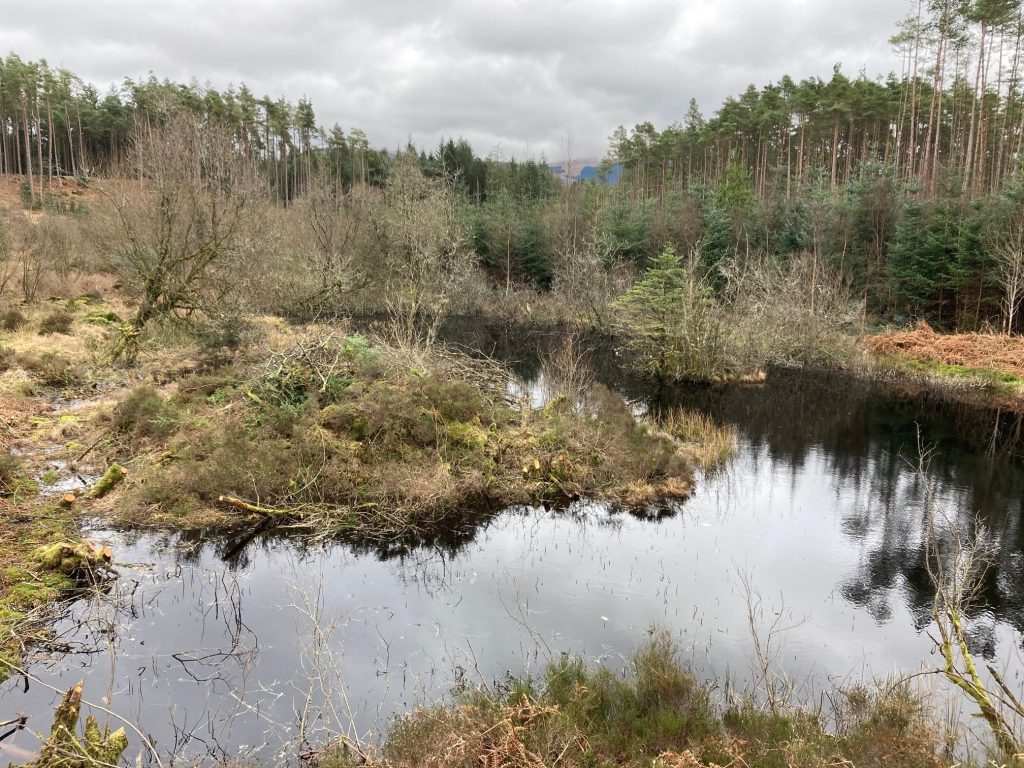Forestry and Land Scotland (FLS) has worked with a local contractor to give a pond in Galloway Forest Park a dragonfly-friendly makeover.
FLS had identified the pond as an area of importance for dragonflies and earmarked it for improvement under its land management plan for the area.
Unfortunately, someone illegally added fish to the pond around 2013 and work couldn’t proceed until it was confirmed the fish had completely gone from the pond.
A survey in 2023 confirmed there were no fish left, and FLS assessed the pond’s suitability for dragonflies.
The pond is an old quarry working between productive forestry and some Scots Pine and broadleaf trees.
Kim Kirkbride, environment forester at FLS, said: “We appointed Connicks Ltd, a local contractor with an ecological management background, to help restore the pond, which is about 1500 metres square.
“The pond had suffered from the illegal introduction of fish, which made it unsuitable for dragonflies. The fish would eat all the larvae.
“Over the years, trees and vegetation had naturally encroached on the pond.
“There was a lot of willow scrub around the pond, which created too much shade. We need more sunlight on the pond so the water will be warmer, making it more suitable for dragonfly breeding.
“We’ve also removed the majority of vegetation that was in the pond.
“Vegetation is useful in a pond because dragonflies and other species use it to lay their eggs. But this pond had too much, which can cause negative effects, so in some sections it’s been scythed back.”
FLS formed a conservation partnership with the British Dragonfly Society in 2023 to protect and boost the population of some of the rarest dragonflies in the British Isles.
Kim said:
“The Galloway Forest Park pond was once known for supporting various species of dragonflies, namely darters, hawkers and damselflies.
“So while we’re focused on rebuilding the pond for more common species, it could be we also welcome some of the rarer dragonflies.
“We’re reviewing our forests to work out where we can feasibly enhance or add ponds to support these creatures.
“Where the land management plan identifies where conifer is to be removed and replaced with broadleaf, we may have the option to add wet hollows which fill with water and vegetation.
“Those will eventually attract insects that support other species such as dragonflies and black grouse.
“We want to support the return of dragonflies as they’re a sign of a complex and balanced ecosystem. And they’re also very lovely to watch on a sunny day.”





